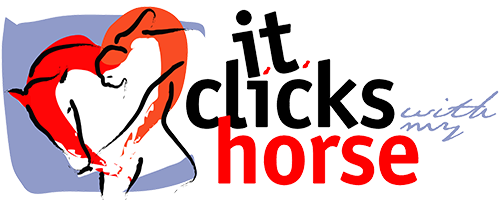Ethologie
Affiliative behavior
- A case of co-operative nursing and offspring care by mother and daughter feral horses
- Affiliative relationships among Sorraia mares: influence of age, dominance, kinship and reproductive state (pdf)
- Behavior of feral horses in response to culling and GnRH immunocontraception
- Behavioral patterns and proximate reason of young male separation in Misaki feral horses
- Behaviour of Bachelor Males of the Przewalski Horse (Equus ferus przewalskii) at the Reserve Askania Nova
- Behavior patterns and communication in feral horses
- Behavioral patterns and proximate reason of young male separation in Misaki feral horses
- Behavioural observations of reintroduced Takhi or Przewalski horses (Equus ferus przewalskii) in Mongolia
- Causes of natal dispersal and emigration and their effects on harem formation in Misaki feral horses
- Characterization of anticipatory behaviour in domesticated horses
- Coping in groups of domestic horses – Review from a social and neurobiological perspective
- Coprophagy as an avenue for foals of the domestic horse to learn food preferences from their dams
- Differences in social behaviour between late pregnant, post-partum and barren mares in a herd of Icelandic horses
- Effects of fly disturbance on the behaviour of a population of reintroduced Przewalski horses (Equus ferus przewalskii) in Mongolia
- Equid Play Ethogram (pdf)
- Factors affecting the harem formation process by young Misaki feral stallions
- Factors That Affect Harem Stability in a Feral Horse (Equus caballus) Population on Shackleford Banks island, NC (pdf)
- Formation and dissolution of the mare–foal bond
- Grooming at a preferred site reduces heart rate in horses
- Maternal behavior of Belgian mares
- Maternal care and foal social relationships in a herd of Sorraia horses: Influence of maternal rank and experience
- Monitoring of agnostic behaviours and foal mortality in free-ranging Przewalski’s horse harems in the Mongolian Gobi (2009) (pdf)
- Mutual grooming and nearest-neighbor relationships among foals of Equus caballus
- Play behaviour of Przewalski horses (pdf)
- Post-conflict friendly reunion in a permanent group of horses
- Self-grooming by mares and foals of the Welsh pony
- Social interactions of free-ranging Przewalski horses in semi-reserves in the Netherlands
- Social structure and interactions in groups of horses containing stallions (pdf)
- Social organization of feral horses
- Social bonds between unrelated females increase reproductive success in feral horses (pdf)
- Stallion Mate Choice and Mare Sexual Behaviour in a Herd of Sorraia Horses (Equus caballus) (pdf)
- The effect of stallions on social interactions in domestic and semi feral harems
- The effects of immunocontraception on harem fidelity in a feral horse (Equus caballus) population
- The importance of social relationships in horses (pdf, dissertation)
- The Potential Effects of Social Interactions on Reproductive Efficiency of Stallions
Agonistic behavior
- Aggression and social spacing in light horse mares and foals
- Agonistic ethogram of the equid bachelor band (pdf)
- Dominance relationships and aggression of foals
- Dominance hierarchies in domestic horses
- Dominance relationships and aggression of foals
- Exploring aggression regulation in managed groups of horses
- Factors Affecting Dominance and Aggressive Interactions Among Castrated Male Domestic Horses (pdf)
- Harem stability and reproductive success of Misaki feral mares
- Horse sense: social status of horses (Equus caballus) affects their likelihood of copying other horses’ behavior (pdf)
- Interband dominance in feral horses
- Nursing behaviour and maternal aggression among Welsh ponies
- Social feeding decisions in horses (Equus caballus)
- The benefits of high rank in the wintertime—A study of the Icelandic horse
- The effect of stallions on social interactions in domestic and semi feral harems
- The position of the stallion in the equine dominance hierarchy of feral and domestic ponies (pdf)
- The stability of equine dominance hierarchies and the effects of kinship, proximity and foaling status on hierarchy rank
Time budget and habitat use
- Behavior of horses on pasture in relation to weather and shelter – a field study in a temperate climate
- Daytime rest behavior of the Welsh pony (Equus caballus) mare and foal
- Different daily patterns of serum cortisol and locomotor activity rhythm in horses under natural photoperiod
- Home range and habitat use of free-ranging Przewalski horses at Hustai National Park, Mongolia
- Influences of immunocontraception on time budgets, social behavior, and body condition in feral horses
- Takhi’s home range and water point use (2003) (pdf)
- Play development in Welsh pony foals
- Seasonal movements and home ranges of feral horse bands in Wyoming’s Red Desert (pdf)
- The 24-hour time budget of Przewalski horses
- The effect of enclosure size on social interactions and daily activity patterns of the captive Asiatic wild horse (Equus przewalskii)
- Time budgets of adult Przewalski horses: Effects of sex, reproductive status and enclosure
- Time-Budgets of Camargue Horses I. Developmental Changes in the Time-Budgets of Foals
- Time-Budgets of Camargue Horses Ii. Time-Budgets of Adult Horses and Weaned Sub-Adults
- Time-Budgets of Camargue Horses Iii. Environmental Influences
Evolution
